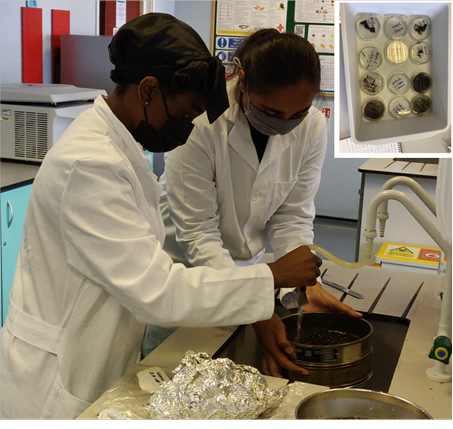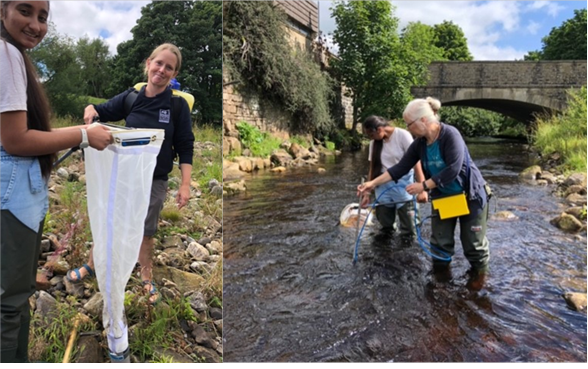An update on a previous blog post about our microplastic project in Co Durham, UK.

Environment Group researchers Drs Baldini, Baker, He, Rollason and Scott, along with recent Environmental Science graduate, Zhuhaa Siddiq, recently partnered with Durham Wildlife Trust to investigate microplastics in the River Wear. Fieldwork happened over several weeks in late summer 2021 and involved standing in the river with a microplankton net and flow meter for 20 minutes to collect a known volume of river water for microplastics detection. We sampled water and sediments at five locations along the river Wear from the source (near Wearhead) to the tidal limit (Chester-le-Street). Laboratory analysis revealed a pattern of increasing microplastics in river water downstream from the source until river flow was altered by Durham city weirs. A sharp decrease in microplastics was observed at the furthest downstream site, Chester-le-Street. In sediments, there was a clear pattern of microplastics accumulation downstream of wastewater treatment plants. In summer 2022, Environmental Management research project student, Patrick van Loo Jenner, investigated our hypothesis of microplastics accumulation upstream of weirs in Durham as a precursor to scheduled dredging by the Environment Agency. In March 2022, Dr Baldini presented preliminary findings to a Source to Sea workshop addressing plastics pollution at Durham County Council and in July 2022, submitted a final report to Durham Wildlife Trust. A manuscript of our findings is currently in prep. For more on this successful Teesside University collaboration with local partners see https://www.durhamwt.com/source-sea.


